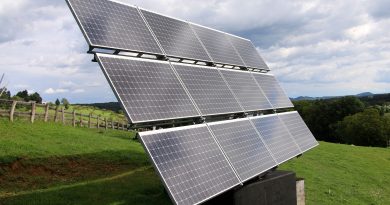On-Grid Solar Roof Systems: Harnessing Solar Power
On-grid solar roof systems have gained immense popularity in recent years as a sustainable solution for generating electricity. With the rising concerns about climate change and the need to reduce carbon emissions, homeowners and businesses are increasingly turning to this renewable energy technology. In this article, we will delve deep into the world of solar roof systems, exploring their benefits, components, installation process, and future prospects. Join us as we uncover the power of the sun and its potential to revolutionize the way we generate electricity.
Table of Contents
Understanding On-Grid Solar Roof Systems
On-grid solar roof systems, also known as grid-tied or grid-connected systems, to generate electricity using renewable solar energy while maintaining a connection to the traditional electricity grid. Unlike off-grid systems that are completely independent, on-grid systems allow users to consume electricity directly from the grid when solar power output is insufficient.
One of the key components of an on-grid solar roof system is the solar panels, which capture sunlight and convert it into direct current (DC). Photovoltaic (PV) cells, which generate electricity when exposed to sunlight, typically compose these panels. Use an inverter to convert DC into alternating current (AC), enabling the utilization of the electricity generated by solar panels for household appliances and sending excess power back to the grid.
The Advantages of On-Grid Solar Roof Systems
There are several benefits to installing an on-grid solar roof system. Firstly, it allows users to significantly reduce their electricity bills by generating their own clean energy. The excess electricity that is sent back to the grid can also be credited or sold to utility companies, providing an additional financial advantage.
Secondly, on-grid solar roof systems are environmentally friendly as they do not rely on fossil fuels for power generation. By harnessing the power of the sun, these systems contribute to reducing carbon emissions and combating climate change.
Furthermore, on-grid systems require less maintenance compared to off-grid systems. With no need for batteries and fewer components involved, the system is simpler and requires fewer inspections and repairs. Additionally, should any maintenance be required, it can often be performed by the homeowner themselves, further reducing costs.
Installation and Components of On-Grid Solar Roof Systems
Firstly, conduct a structural analysis of the roof to determine its suitability for solar panel installation. Take into account factors such as orientation, tilt, and shading to ensure optimal energy production.
Next, mount the solar panels on the roof using specialized racks and brackets. Connect these solar panels in series and parallel configurations based on the desired output. To maximize panel efficiency, connect an inverter to convert the generated DC electricity into AC electricity, suitable for household appliances.
An on-grid solar roof system includes a crucial component—the net meter. This meter accurately measures the electricity generated and consumed. When surplus electricity is generated, it flows back to the grid, causing the meter to spin backward. Homeowners receive credits for the excess power supplied, effectively utilizing the grid as a virtual battery for the on-grid system.
The Future of On-Grid Solar Roof Systems
The future prospects for roof systems are promising. As technology advances and the cost of solar panels continues to decline, these systems are becoming more accessible and affordable for homeowners and businesses. Moreover, expect the integration of smart technologies and energy storage solutions to enhance on-grid systems, creating a more efficient and reliable energy infrastructure.
Furthermore, governments and utility companies around the world are incentivizing the adoption of solar energy by offering tax credits, rebates, and feed-in tariffs. These incentives encourage individuals and businesses to invest in roof top systems, further accelerating the adoption of this renewable energy technology.
In conclusion, on-grid solar roof systems stand as a beacon of cost savings, environmental sustainability, and easy maintenance. With the promise of future advancements and growing government support, these systems wield the transformative power to reshape our energy landscape, paving the way for a brighter, cleaner future. With SolarClue® by your side, this commitment to harnessing the abundant power of the sun becomes not just an investment but a tangible step towards a sustainable and eco-friendly way of life. Seize the opportunity to embrace clean energy and be a part of the solar revolution with SolarClue® guiding you towards a greener, more sustainable future.
Frequently Asked Questions
On-grid solar roof systems are setups where solar panels on a roof are connected to the electrical grid, allowing bidirectional energy flow.
On-grid systems are connected to the grid, enabling users to draw power and feed excess energy back, while off-grid systems operate independently.
Benefits include cost savings, grid stability, and potential compensation for surplus energy through mechanisms like net metering.
Yes, on-grid systems provide a continuous power supply, allowing users to draw electricity when solar production is insufficient.
Excess energy is fed back into the grid, often resulting in credits or compensation for users through programs like net metering.
They are most effective in areas with reliable grid connectivity, making them ideal for urban and suburban environments.
Installation involves mounting solar panels on the roof, connecting them to an inverter, and integrating the system with the electrical grid.
Regular cleaning of solar panels and monitoring system performance are typical maintenance tasks.
No, for safety reasons, on-grid systems automatically shut down during power outages to prevent backfeeding electricity into the grid.
Many regions offer incentives, tax credits, or rebates to encourage the adoption of on-grid solar roof systems.


